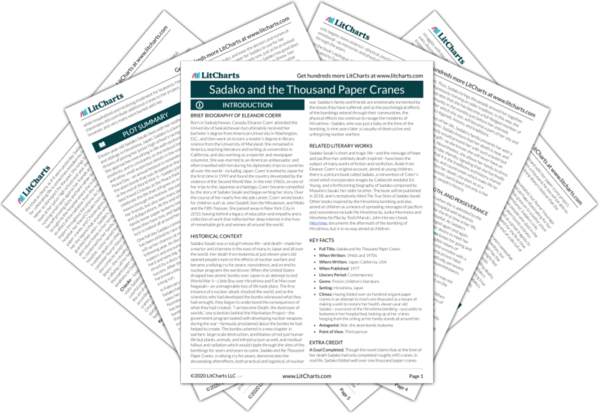AI ToolsNew
Tools to make learning and teaching easier
Sadako and the Thousand Paper Cranes Study Guide |
Next
Summary
|
Welcome to the LitCharts study guide on Eleanor Coerr's Sadako and the Thousand Paper Cranes. Created by the original team behind SparkNotes, LitCharts are the world's best literature guides.

A Goal Completed. Though the novel claims that at the time of her death Sadako had only completed roughly 640 cranes, in real life, Sadako folded well over one thousand paper cranes while hospitalized and receiving treatment for leukemia. Her classmates did contribute additional cranes to her project, however, and very many were buried with her.